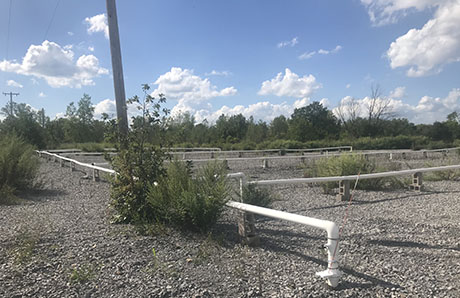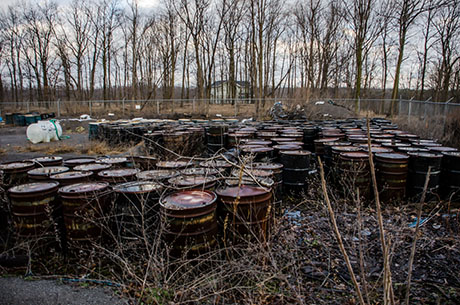Environmental agencies continue to work on Lehigh TCE spill, but contamination will linger for decades to come

Federal and state environmental agencies are continuing to monitor and work on cleanup of contaminants at the Lehigh Train Derailment Superfund Site off of Gulf Road, according to information obtained by The Batavian.
The elimination of TCE contaminants from groundwater in the four-mile-long plume area, which stretches from Gulf Road to four miles east and southeast of the derailment site, is not likely to occur in most of our lifetimes.
The derailment site cleanup was largely forgotten until 2011 when it became the focus of speculation during the Le Roy tic issue when about a dozen high school girls developed spontaneous tic-like movements.
Bob Bowcock, an environmental scientist brought to Le Roy by environmental activist and lawyer Erin Brockovich, determined then that there was no TCE reaching the school property, and it was unlikely the spill site and the tics were linked (the girls were diagnosed with conversion disorder and no scientific evidence ever emerged to contradict that diagnosis).
Information about the spill site made public by the Environmental Protection Agency since then confirm Bowcock's analysis.
In 2017, the Lehigh Valley Railroad corporation, under the direction of the EPA and the DEC, completed a vapor-extraction program at the spill site.
Michael Basile, regional spokesman for the EPA, said the vapor removal effort, which lasted for two years, did remove some TCE, but vapor extraction cannot remove all of it.
"It has been determined that there is TCE embedded in the rock/gravel at the site that cannot be removed via the SVE system," Basile wrote in an email. "Consultants for the responsible party have recently completed a study that has looked at several remedial measures that may be feasible to address the contamination at the site. It is under review by EPA and New York State. EPA will determine the appropriate next steps."
TCE, or trichloroethylene, according to the EPA website, is "a volatile organic compound." It is a clear, colorless liquid that has a sweet odor and evaporates quickly. TCE is a toxic chemical with human health concerns."
After the Lehigh Valley derailment in 1970, a plume of TCE quickly spread to the east and southeast for about four miles, in a human-foot-shaped pattern and groundwater forces around it have kept it contained to that area. It has become embedded in the bedrock of the plume area making it impossible to completely remove.
Eventually, it will all evaporate as hydraulic action brings more and more of it to the surface, but that process will take five decades or more.
"Considering the railroad derailment occurred in December 1970 -- where it was estimated that 30,000 to 35,000 gallons of TCE were spilled onto the ground contaminating the soil and groundwater -- even with the most sophisticated hydrogeological equipment it is very difficult to estimate how much contamination still exists in the area," Basile said.
The EPA says current vapor levels in the plume area are generally below the levels of human health concerns.
Basile said 13 residences in the plume area have been affected by the spill and have vapor-mitigation systems installed in their homes and the EPA continues to monitor these properties.
The public water supply has been protected from the plume, according to the EPA.
"With the extension of the public water supply to the affected homes and businesses, the installation of the soil-vapor mitigation systems on the affected homes, plus continual monitoring of the groundwater, public health and safety concerns continue to be achieved," Basile said.
Top photo: Vapor removal pipes still in place at the derailment site. The vapor removal effort has ended but the pipes remain in place while the EPA and DEC evaluate what steps to take next.

FIle photo: What the site looked like in 2012. The barrels were removed within weeks after this photo was taken, which was during Bob Bowcock's inspection of the site.
Below is a video produced by the EPA in 2017 about the spill cleanup. It goes into a great amount of detail about the hydraulics of the spill, its history, and how it's being monitored and remediated.
